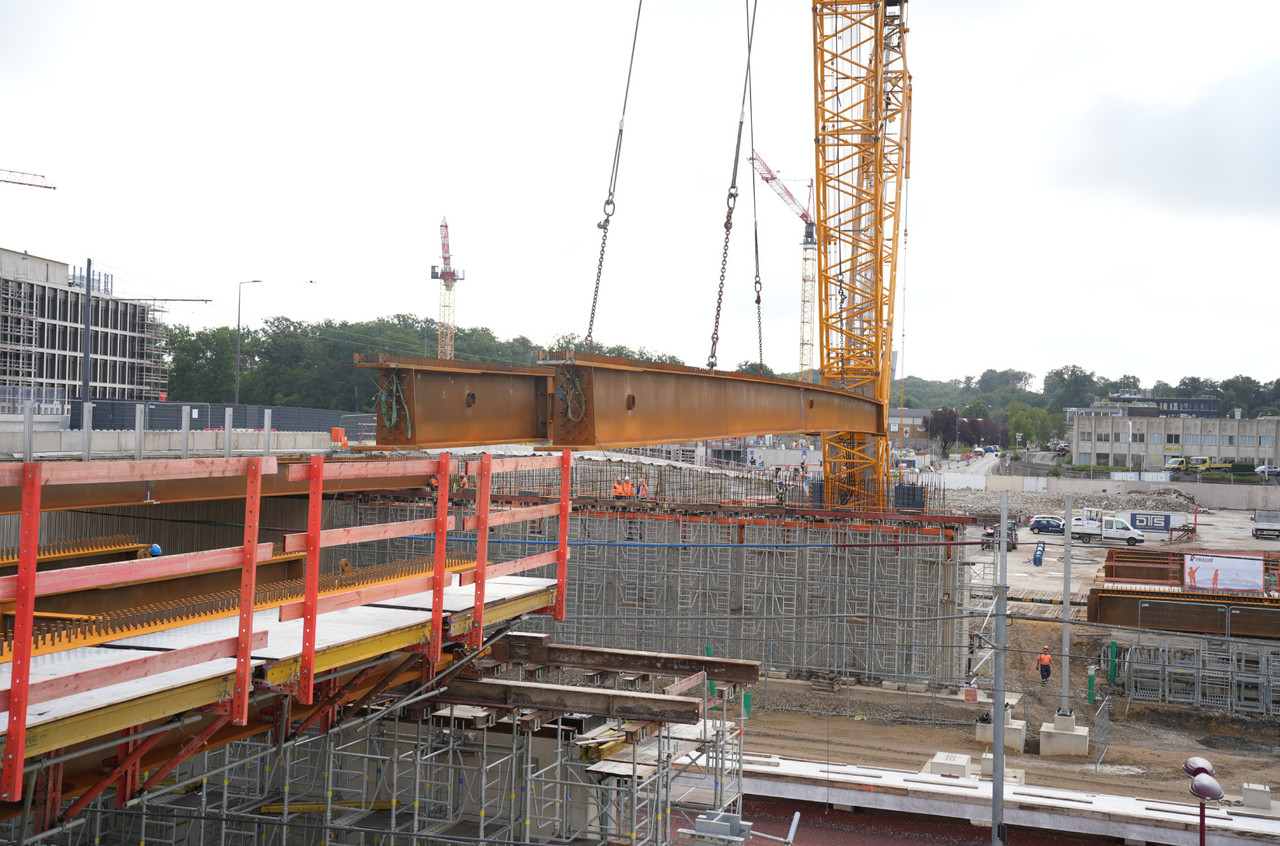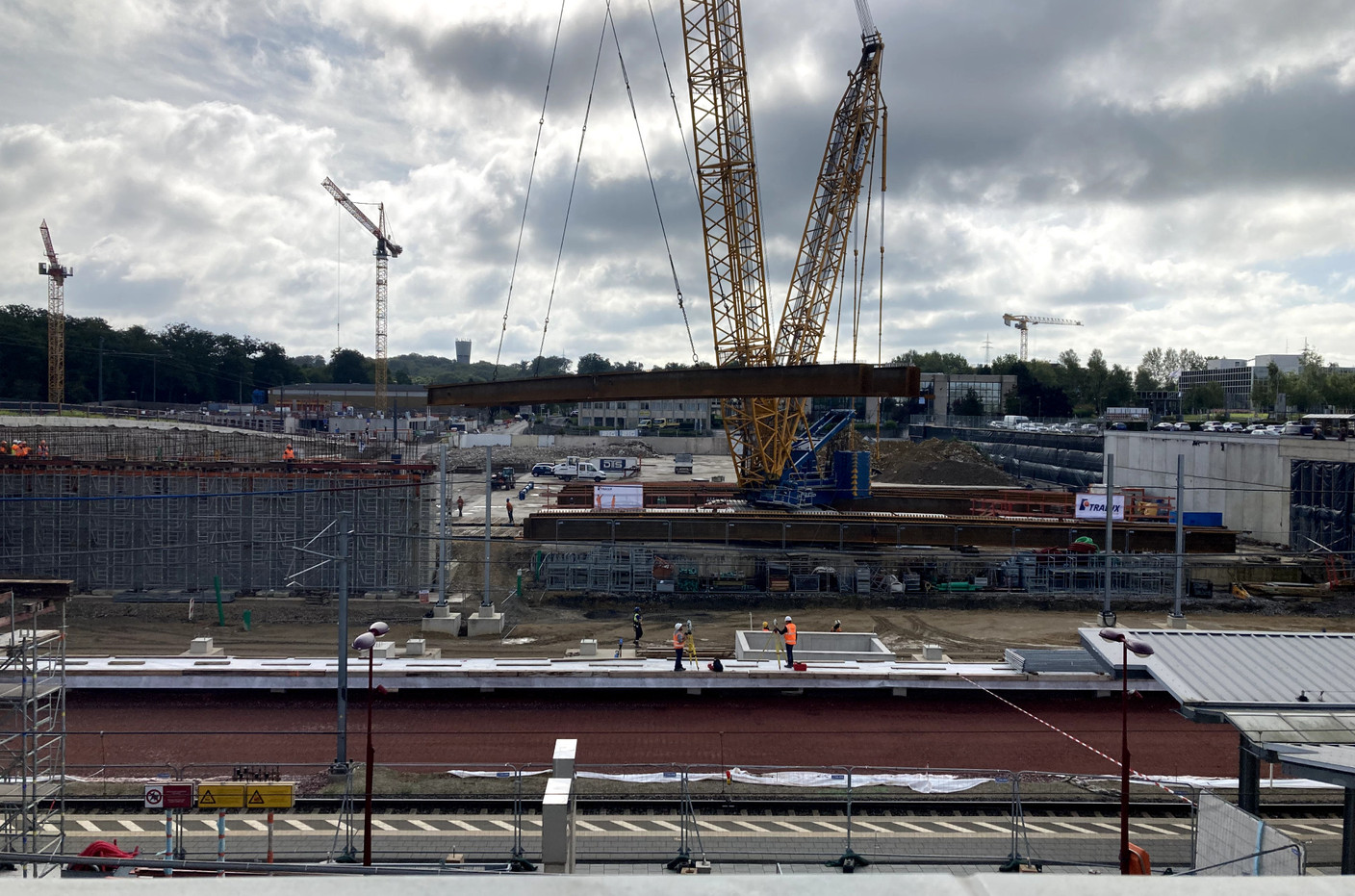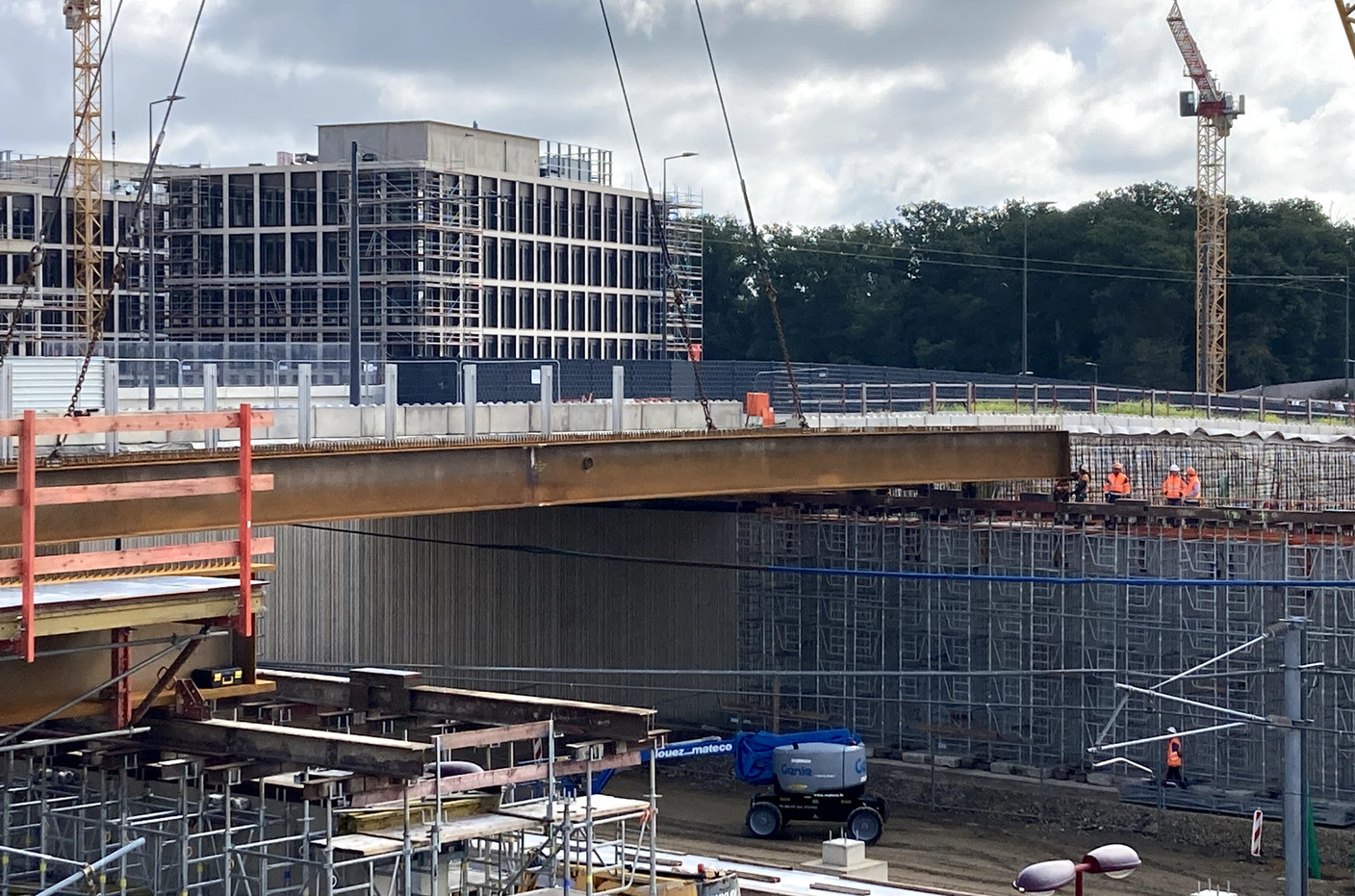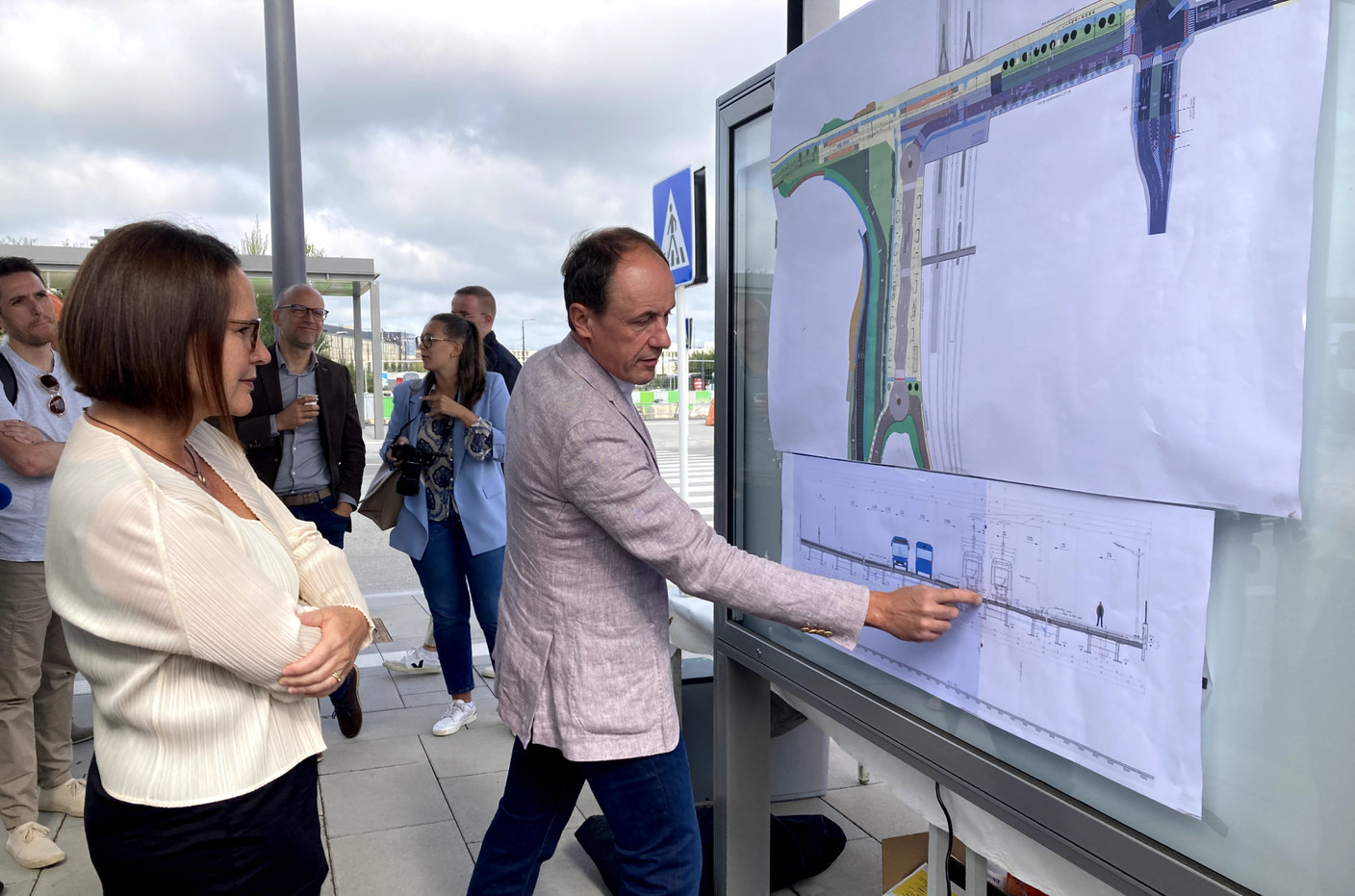A complex, large-scale project is currently underway at Howald station, above the railway tracks. The new mobility hub will be delivered by 2026, but until then, the structures that will house the future deck, where trams, buses, bicycles and pedestrians will run in parallel, need to be built. The minister for mobility and public works, (DP), travelled to the site on Wednesday 21 August to see the impressive double girders being installed on their piers.
“A building site is a pain in the neck for everyone,” said the minister in a familiar, joking tone. “But it’s necessary if we are to build for the future and move towards something better. That’s the case here at Howald, with this future multimodal interchange.” This new hub is in fact a key point in the government’s integrated mobility plan, enabling public transport (trains, trams and buses) and active mobility (pedestrians and cyclists) to be linked quickly and efficiently.
Before the astonished eyes of the participants, teams from Tralux and their subcontracting partners (MBB, Sarens) manipulate gigantic metal beams, each weighing 80 tonnes. It takes a 600-tonne crane to lift them, and the unrivalled experience of a crane operator assisted by a team on the ground who guide him to move these steel monsters centimetre by centimetre, very delicately despite their extraordinary dimensions. The aim is to position the beams on the concrete piers on either side of the railway line, thus creating the load-bearing structure that spans the railway.
Optimum coordination
To achieve this, optimum coordination had to be established between the various players involved in the site, namely CFL, Luxtram and the Ponts & Chaussées Administration (National Roads Administration). Train traffic was halted for the occasion. “It took months of preparation to coordinate this operation. It’s not very complex, but it is complicated, because there are a lot of parameters to take into account,” explains Roland Fox, director of the Ponts & Chaussées Administration. Fortunately, the players involved are close to each other and all speak the same language, that of the site. This avoids bottlenecks and enables us to find the right solutions.
In just a few hours, the beams will all be in place, enabling the rest of the work to continue, namely the construction of the slab that will house the interchange. The second tram track is also being prepared. This track could not be completed last year due to right-of-way constraints, but an agreement was reached in December 2023, after which work resumed on the project. Construction will continue until 2025, when Luxtram will take over to complete the second tramway lane. The two-lane tramway will be operational in spring 2026.
This article was originally published in .






